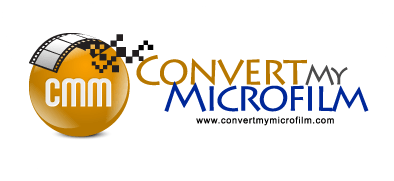FAQS
There are many different types of film and fiche. To help identify which type you have, look at our different conversions options where we have listed all different types of microfilms. If you are still unsure give us a message with a picture of your form and we can help identify it for you.
We offer conversions for all different types of microfilms. We have the capabilities to convert film, fiche, and aperture cards in a wide variety in sizes.
Technically yes. Though for most people it is much more cost effective to send it out and have it converted for them. There are a variety of machines at all different price points, but we can offer great prices and save you time and money.
Fill out our simple form and a representative will contact you. After we get in contact, we can start the process to help you get a small portion of your project in our facility. From there we will convert it to different types so that you can better choose what you will want your final output to be.
It depends on the volume. We have a high rate of production, that gives us the ability to have a quick turn-around on time sensitive projects. We do also pride ourselves on the quality of work we do. Once you contact us, we can set up a schedule for you and your project.
We offer a variety of options. Most common are PDF (Portable Document Format) and TIFF (Tagged Image File Format.) We can also do any type of output file you need for your project. We also offer two different output types. Bitonal is a black and white image that offers a smaller file size and better OCR processing. Grayscale is a shaded document that more accurately represents the original document, but takes up more space.
We can ship them back to you through a courier service (FedEx, UPS, USPS.) For more sensitive or larger volume projects pick them up in person. The files loaded onto an encrypted hard drive and delivered with the film back to you as well.
Microfilm has been around for many years. It’s original advantage was the ability to store many documents in a much smaller form than the paper it was originally. With the proper storing and use it’s advertised to have a shelf life of 500 years, but many times we see that even under the best circumstances microfilm starts to degrade after a much shorter time. This with the continuing rarity of microfilm readers means that now is the time to convert. While Microfilm was great for saving space now with storage being very affordable and all companies now having access to computers it saves even more space to keep the files in a digital format.
We do not offer this service. As a company we only convert different microfilms to digital formats.
Yes, our facility is equipped with the ability to convert paper files into digital formats as well. We also offer as part of this service prepping of the documents as well (removing staples, papers clips, etc.) We will then do the same process as microfilms and send you a variety of different types of output to compare to help you decide what is right for you and your project.
We do conversions from all over the world. No matter where you are located, we are willing to start our line of communication to get your microfilms to us.
Yes, we will deliver your files however you need them. We offer secure data transmissions if delivering online.
We operate on a secure network island to keep your files safe. All our conversion equipment and files are kept in their own network in our facility that is not connected to the internet. Anytime we need to get data from our servers to the customer through the internet we use a physical medium (External Hard Drive, Thumb Drive, etc.) to get the data from the island to a device connected to the internet for upload. We also have secure doors that offer audit trails to make sure no one that should not be in the area with your data is not.
